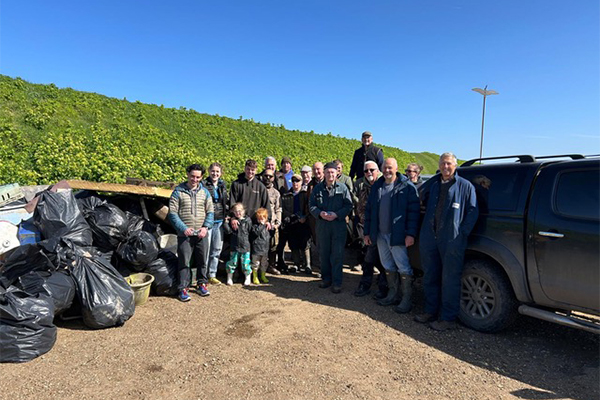
The haunting of Lindisfarne mudflats
“I don’t share this strange story often but now seems like a good time to talk about the haunting of Lindisfarne mudflats.”
Get information on the legal shooting season for mammals and birds in the UK.
Apply for funding for your project or make a donation today
Comprehensive information and advice from our specialist firearms team.
Everything you need to know about shotgun, rifle and airgun ammunition.
Find our up-to-date information, advice and links to government resources.
Everything you need to know on firearms law and licensing.
All the latest news and advice on general licences and how they affect you.

BASC is calling on members and the wider shooting and conservation community to make and install duck nest tubes, and record their usage, in a bid to help improve the breeding success of the declining mallard as part of a Europe-wide initiative.
BASC has joined forces with the Waterfowlers’ Network, a group of hunting organisations from across Europe, to promote the use of mallard nest tubes and to monitor their usage in the hope of improving the breeding success of mallard which is currently an amber-listed, declining species.
Duck tubes would need to be built and installed by the end of February, ready for the start of the breeding season in March. A data collection form will go live on the Waterfowlers’ Network website in June after the breeding season has finished.
Kiri Thompson, assistant biodiversity officer at BASC, said: “Mallard are our most numerous breeding duck species however their population has been in decline in the UK since the 1980s.
“Mallard nests are often destroyed before the eggs have chance to hatch through for a number of reasons including predation, trampling from livestock or disturbance from dog walkers. The success rates from ground nests can be as low as 15 per cent. Nest tubes offer security and protection from the elements and elevate nests off the ground. When used properly these tubes have been shown in other countries to boost fledgling success.
“BASC and the Waterfowlers’ Network wish to monitor the success rate in the UK and discover what, if any, features impact success rate.”
Heather Warrender, science officer at BASC, added: “We are calling on members and the wider shooting community to make and erect nest tubes on land they own or shoot over and record usage in the hope we can improve breeding success across the species’ flyway.
“The Waterfowlers’ Network is looking to collect data including aspects such as habitat type, management, location, levels of predator control, usage and signs of a successful hatch. We also welcome people setting up cameras to monitor nest activity and hopefully get some great footage of ducklings leaving the tube.”
BASC will be publicising the data collection forms as soon as they go live. For more information, including on building and siting duck nest tubes and mallard identification, click here.
For useful videos on BASC’s YouTube channel, see below:

“I don’t share this strange story often but now seems like a good time to talk about the haunting of Lindisfarne mudflats.”

Funded by BASC’s Wildlife Habitat Charitable Trust, the camera is streaming live footage from a hen harrier nest on the Swinton Estate.

Thirty members of Fenland Wildfowlers Association took part in an extensive litter pick along a nine-mile stretch of The Wash.
Sign up to our weekly newsletter and get all the latest updates straight to your inbox.
© 2025 British Association for Shooting and Conservation. Registered Office: Marford Mill, Rossett, Wrexham, LL12 0HL – Registered Society No: 28488R. BASC is a trading name of the British Association for Shooting and Conservation Limited which is authorised and regulated by the Financial Conduct Authority (FCA) under firm reference number 311937.
BASC Direct Ltd is an Introducer Appointed Representative of Agria Pet Insurance Ltd who administer the insurance and is authorised and regulated by the Financial Conduct Authority, Financial Services Register Number 496160. Agria Pet Insurance is registered and incorporated in England and Wales with registered number 04258783. Registered office: First Floor, Blue Leanie, Walton Street, Aylesbury, Buckinghamshire, HP21 7QW. Agria insurance policies are underwritten by Agria Försäkring.
If you have any questions or complaints about your BASC membership insurance cover, please email us. More information about resolving complaints can be found on the FCA website or on the EU ODR platform.